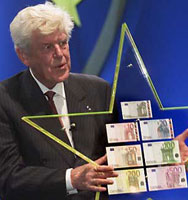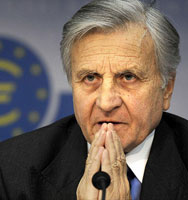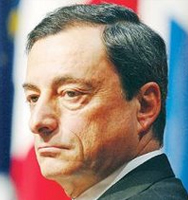Euro Banknotes
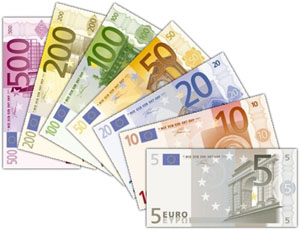
Euro banknotes are the banknotes of the euro, the currency of the eurozone (see European Union). They have been in circulation since 2002 and are issued by the European Central Bank (ECB), each bearing the signature of the President of the European Central Bank. Denominations of notes range from €5 to €500 and, unlike euro coins, the design is identical across the whole of the eurozone, although they are printed in various member states.
Denominations
There are seven different denominations, each having a distinctive colour and size. The design for each of them has a common theme of European architecture in various artistic periods.The front (or recto) of the note features windows or gateways while the back (or verso) has bridges. The architectural examples are stylised illustrations, not representations of existing monuments.
Common to all notes are the European flag, the initials of the European Central Bank in five versions (BCE, ECB, EZB, ΕΚΤ, EKP), a map of Europe on the back, the name "euro" in both Latin and Greek script ("ΕΥΡΩ") and the signature of the current president of the ECB. The 12 stars from the European Flag are also incorporated into every note.
The euro banknote designs were chosen from 44 proposals in a design competition, launched by The Council of the European Monetary Institute (EMI) on 12 February 1996. The winning entry, created by Robert Kalina from the Oesterreichische Nationalbank, was selected on 3 December 1996.
Specification
The paper used for euro banknotes is 100% pure cotton fibre, which improves their durability as well as imparting a distinctive feel.
Description of euro banknotes
| Denomination |
Dimensions |
Dominant Colour |
Architecture |
Period |
Printercode position |
| 5 euro | €5 |
120 x 62 mm |
Grey |
Classical |
< 5th century |
|
| 10 euro | €10 |
127 x 67 mm |
Red |
Romanesque |
11-12th centuries |
|
| 20 euro | €20 |
133 x 72 mm |
Blue |
Gothic |
13-14th centuries |
|
| 50 euro | €50 |
140 x 77 mm |
Orange |
Renaissance |
15-16th centuries |
|
| 100 euro | €100 |
147 x 82 mm |
Green |
Baroque & Rococo |
17-18th centuries |
|
| 200 euro | €200 |
153 x 82 mm |
Yellow-brown |
Iron & Glass |
19-20th centuries |
|
| 500 euro | €500 |
160 x 82 mm |
Purple |
Modern |
20-21st centuries |
|
| Front (recto, obverse) |
Value |
Back (verso, reverse) |
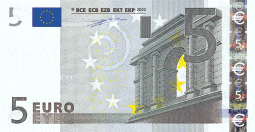 |
€ 5 |
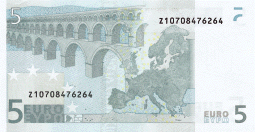 |
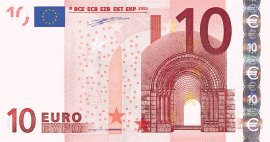 |
€ 10 |
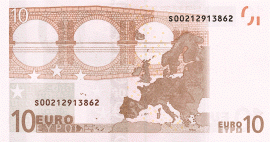 |
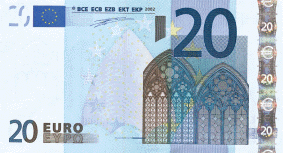 |
€ 20 |
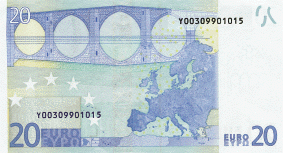 |
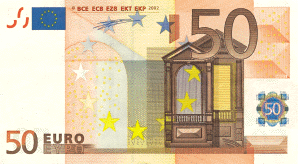 |
€ 50 |
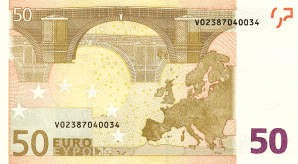 |
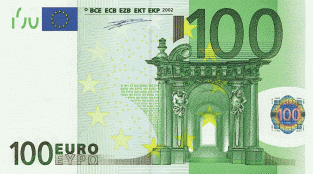 |
€ 100 |
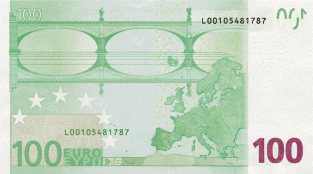 |
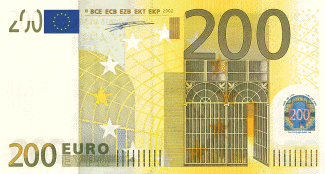 |
€ 200 |
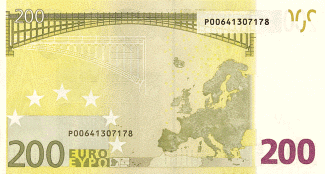 |
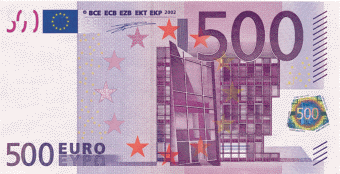 |
€ 500 |
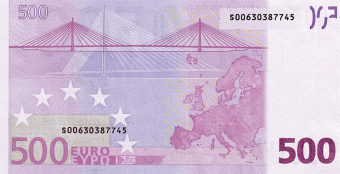
|
Map of Europe
The banknotes show a geographical representation of Europe. It excludes islands of less than 400 square kilometres because high-volume offset printing does not permit the accurate reproduction of small design elements.
The tiny boxes near the bottom of the banknote show the Canary Islands and some overseas territories of France where the euro is also used.
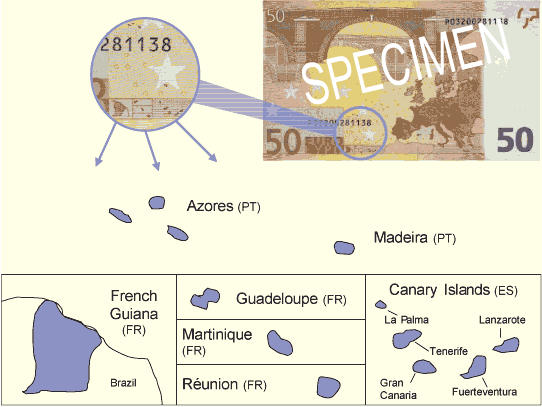
Country codes
Unlike the euro coins, the euro notes do not have a national side indicating where they're from. This information is instead encoded within the note's serial number.
The first letter of the serial number uniquely identifies the country that issues the note. The remaining numbers (when added up and the digits of the resulting sum then added together again until a single digit remains) give a checksum also particular to that country. The W, K and J codes have been reserved for the EU member states currently not participating in the euro.
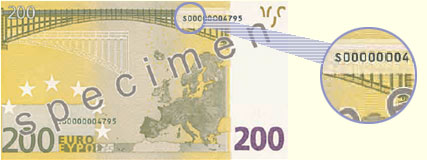
National identification codes
| Code |
Country |
Z |
Belgium |
Y |
Greece |
X |
Germany |
(W) |
(Denmark) |
V |
Spain |
U |
France |
T |
Ireland |
S |
Italy |
R |
Luxembourg |
(Q) |
Not Used |
P |
Netherlands |
(O) |
Not Used |
N |
Austria |
M |
Portugal |
L |
Finland |
(K) |
(Sweden) |
(J) |
(United Kingdom) |
Presidents of the European Central Bank
List of presidents since the establishment of the bank on 1 June 1998.
| 
